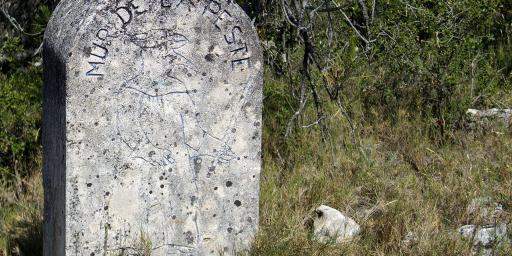Mur de la Peste a Rocky Trail in Provence’s History
Over 100,000 people (some estimates as high as 126,000) died in Provence between 1720 and 1722, including almost 50% of Marseille’s population some 46,000 inhabitants.
All in the name of commerce.
The Grand Saint-Antoine arrived in Marseille’s port on May 25, 1720, from Syria (previously Levan), the vessel was late, delayed due to weather and other transit issues. The captain did inform authorities that some crew, including the ship’s doctor, had fallen ill and received sea burials en route to Marseille. However, trade merchants pressured for faster access for the ship to the seaside docks to off-load the cargo of silks and pieces of cotton destined for the annual trade fair in Beaucaire on July 20th that year. Port officials agreed to the request, by-passing docking and three-tiered inspection procedures established by the Sanitation Board.
The “Great Plague” was the final time the city’s population faced the undiscerning, deadly disease (previous occurrences 1346, 1451,1588 and 1629). This time, however, was the most devastating incidence for both the city and the region. The bacteria Yersinia pestis marched through Provence at a rapid pace, killing 1000/people per day at its peak.
Towns and villages along trade routes were the most affected by the plague; including Aix-en-Provence, Arles, Apt and Toulon. Whole streets were closed in cities – see Rue Fermée in Aix-en-Provence – in attempts to isolate and quarantine those who had fallen ill.
Although the papal residency (1309–77) in Provence had ended, the Catholic Church still controlled large swaths of land – Avignon and its surroundings, the Comtat Venaissin and Dauphiné – essentially everything from Cavaillon beyond Orange to the north and Mont Ventoux in the east. August 1721, trade between papal territories and the balance of today’s Provence ceased, marked by the physical construction of a two-metre dry stone wall that ran for 27 kilometres. Mur de la Peste was guarded both day and night to prevent the northward spread of the plague.
It was too late.
Today, the Mur de la Peste is seen mostly by hikers and dog walkers. Sections of the wall are still visible, and some areas are restored (approx. 6km) to demonstrate the enormity of this project and the desperate attempt to stop the spread of the plague.
Emily Durand is a Franco-American who lives permanently in Provence with her husband and family. Emily’s company is Your Private Provence with a focus on small group, customised tours. Fully bilingual and well acquainted with the region Emily can arrange for single day tours or itineraries for your full stay in the area.
We hiked a short loop of the Mur de la Peste beginning in Cabrières d’Avignon where the Association Pierre Sèche en Vaucluse has partially restored the wall, a project that started in 1986. During our walk, Emily provided me with some background on the Mur de la Peste, general history of the village and details on a few “hidden” treasures that she has found while doing research for her clients.
It takes about 2 hours to complete the circle, there is little elevation change, and it is suitable for most fitness levels. Here is additional information (in French) for hiking information from Cabrières d’Avignon.
Or better yet contact Emily here for a tour of the region.




No Comment